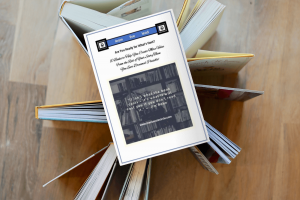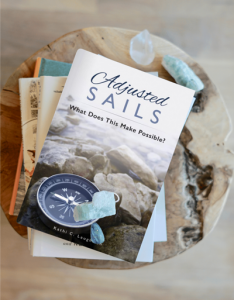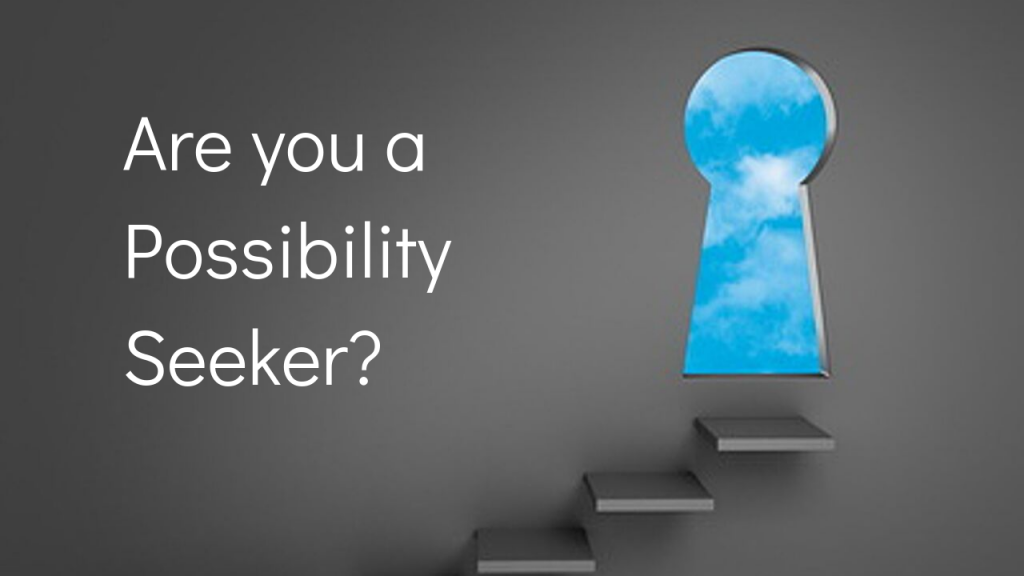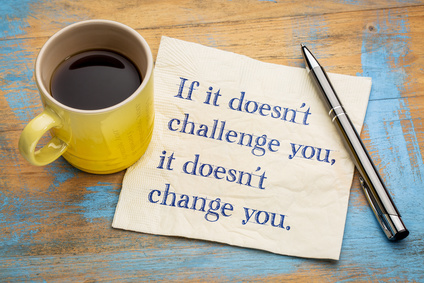
It seemed like an easy challenge. A friend tagged me on a social media challenge to post a picture of seven books over seven days. No reviews or explanations – just a picture of the cover of books that had impacted my life and work. With each day’s post we also invited someone from our community to join the challenge.
For me, a lover of all things words, particularly books, this would seem on the surface to be an easy task and yet it turned out that the challenge was in fact challenging.
Things don’t have to look difficult to be hard.
Sometimes, it isn’t the challenge itself that’s tripping us up. Most of the time it’s our own thoughts.
The dilemma? (and hence the challenge…) Which seven books? What’s in and what’s out?
It would have been easier if the number was larger. There was a lesson there for me. It’s a lesson all writers face at some point. Not everything we do has to encompass everything we do. When we sit down to write a book, the editing process is often the most traumatic. What comes out?
I’ve just recently completed a certification course in editing and it was an insightful look into my own processes as a writer. We want to put it all in… but the message is clearer with a bit of editing.
The same is true for our calendars. What if we only chose one thing to be our priority or focus each day for seven days? What I’m learning about myself is that if I give myself all seven on day one, on day seven, none of them are finished. When I tackle them day by day – they get done.
I’m grateful to my friend and colleague Candy Barone for bringing this challenge to my doorstep. There is learning in everything. Now on to the doing and then the leading.
Curious about the seven books? Here they are:
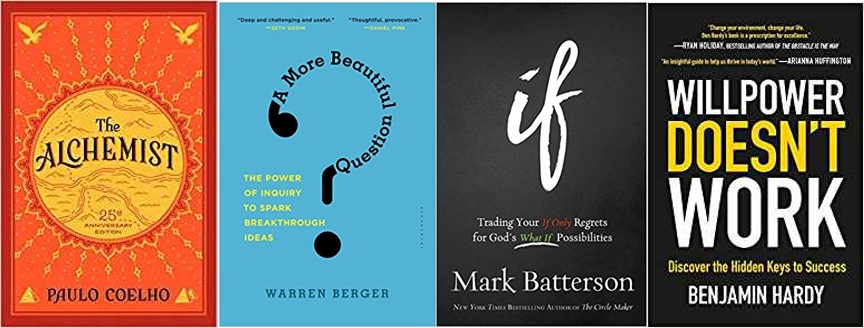
A book I read every year at least once – more if needed. It helps me remember who I am and what matters. As of this past year, the audio version (narrated by Jeremy Irons) is my favorite.
A More Beautiful Question – Warren Berger
The teachings in this book shifted my entire way of thinking about possibilities.
If: Trading Your If Only Regrets for God’s What If Possibilities – Mark Batterson
Mark Batterson first came to my attention as a spiritual mentor and guide with his book The Circle Maker. It shifted my faith walk into something more powerful than I had ever imagined it could be. His writings take up an entire shelf in my library.
Willpower Doesn’t Work – Benjamin Hardy
A new favorite this past year. I heard him speak at a writers’ conference and began reading his posts on Medium. Ben Hardy’s life focus is inspiring. His story is remarkable. His book was a game changer for me, particularly in my health practices.
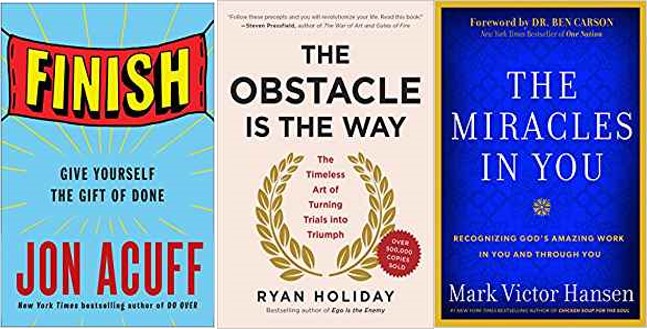
Finish: Give Yourself the Gift of Done – Jon Acuff
Jon Acuff is why my own book – Adjusted Sails: What does this make possible? is finished. I’ve read a number of his books and participated in his coaching program. He is another favorite for audio. Jon does all of the narration himself. His natural humor and wit will have you laughing your way right to insights that will change you.
The Obstacle is the Way – Ryan Holiday
This is another multi-book author favorite. I started with him with this book and went on to Ego is the Enemy, Daily Stoic and Perennial Seller. He also does his own narration. Sometimes it seemed that there was a master class within each sentence. I’ve gained the most from his writings by listening with the printed book in hand while taking notes.
The Miracles in You – Mark Victor Hansen
All of these books have the capacity to change the reader. This one however marked the most significant change overall in my own life. I was able to spend time with Mark Victor Hansen and talk with him about this book and his thoughts on significance. I don’t know of a single day in my life that shifted my view of my work and influence in the world more than that day.
When was your last challenge? What did you learn along the way?
Jim Rohn taught that we should all aspire to be millionaires. Not for the money – but for the person we would have to become to achieve that challenge. Well taught and well lived, Mr. Rohn. Message received!
Live today like you want tomorrow to be. Live well.





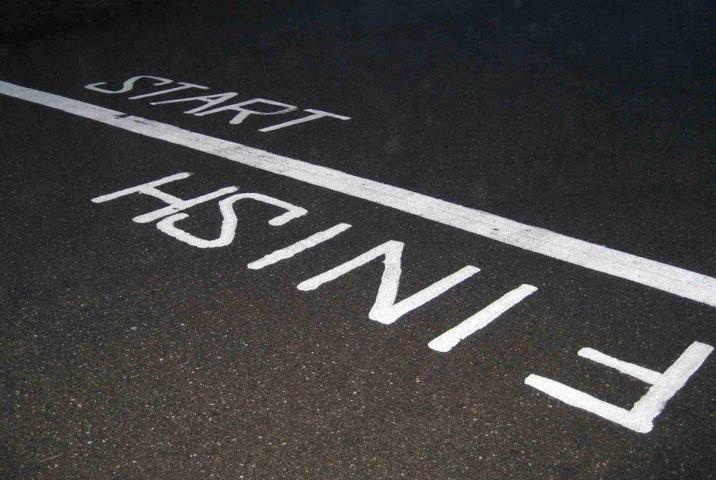
 What is your follow-up plan for the challenges that will appear?
What is your follow-up plan for the challenges that will appear? It seems just a moment ago, we were ushering in the new year and yet here we are, almost at the end of the first month of this trip around the sun.
It seems just a moment ago, we were ushering in the new year and yet here we are, almost at the end of the first month of this trip around the sun. Recently I experienced a situation where fear was an unexpected partner in the dance. Not in an obvious way, but definitely present. In fact, I doubt that anyone involved (including me) recognized at the onset that fear was part of the equation.
Recently I experienced a situation where fear was an unexpected partner in the dance. Not in an obvious way, but definitely present. In fact, I doubt that anyone involved (including me) recognized at the onset that fear was part of the equation.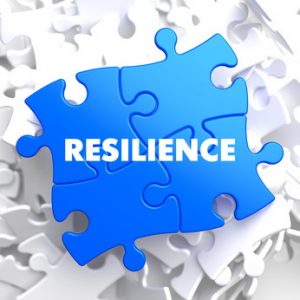 It’s easy to say that we are resilient. It’s much more challenging to live resiliently. It is one of the most important skills we need to develop. But all too often we wait until we need it to determine if we’ve got it. The reality is that it doesn’t work that way.
It’s easy to say that we are resilient. It’s much more challenging to live resiliently. It is one of the most important skills we need to develop. But all too often we wait until we need it to determine if we’ve got it. The reality is that it doesn’t work that way.